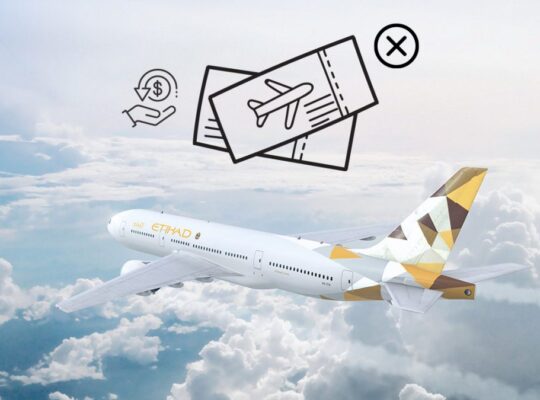The aviation industry is on the brink of a transformative leap with the integration of 5G technology at high altitudes. Imagine a seamless in-flight connectivity experience that goes beyond streaming movies; 5G at altitude is set to redefine the way we travel. Let's delve into the intricacies of this game-changing development and understand how it's poised to enhance in-flight connectivity.
Unveiling the Potential of 5G in the Skies
At the heart of this airborne revolution is the integration of 5G networks in aircraft. This leap in connectivity technology promises faster internet speeds, lower latency, and enhanced reliability. The aviation industry, notorious for its connectivity limitations, is on the verge of a breakthrough.
Recent advancements in satellite technology and ground infrastructure have paved the way for the implementation of 5G networks in aviation. With the promise of reduced dropouts and faster data transmission, 5G is gearing up to redefine the in-flight connectivity landscape.
The Technical Marvel: How 5G Works at Altitude
To comprehend the impact of 5G at altitude, it's essential to understand the technical nuances. Unlike traditional connectivity systems, 5G utilizes millimeter-wave frequencies, enabling faster data transfer. This technology ensures a robust connection even in the challenging environment of the skies.
Satellite links and ground-based stations collaborate seamlessly to provide uninterrupted connectivity throughout the flight. The transition from 4G to 5G opens up new avenues for real-time communication, live streaming, and enhanced passenger experiences.
Elevating the Passenger Experience
The integration of 5G at altitude transcends the limitations of current in-flight connectivity. Passengers can now enjoy high-definition video calls, seamless streaming, and lightning-fast internet browsing. This shift not only caters to entertainment needs but also facilitates efficient work-related tasks, making air travel a productivity haven.
Navigating Through Challenges: Regulatory and Security Implications
As with any technological leap, the integration of 5G at altitude comes with its share of challenges. Regulatory approvals and compliance with international aviation standards are critical hurdles that need to be overcome. Additionally, stringent security measures are imperative to safeguard against potential cyber threats.
Industry stakeholders are working collaboratively to address these challenges, ensuring a smooth and secure transition to 5G in-flight connectivity. As the aviation sector gears up for this technological leap, a comprehensive framework is essential to navigate through regulatory complexities.
Future Perspectives: 5G and the Evolving Aviation Landscape
The impact of 5G at altitude extends beyond in-flight connectivity. Airlines are exploring innovative ways to leverage this technology for operational efficiency, from real-time aircraft monitoring to enhanced cockpit communication. The future sees 5G playing a pivotal role in shaping a more connected and efficient aviation ecosystem.
Overcoming Connectivity Barriers: Travel Tips for the 5G-Era
Choose 5G-Equipped Airlines: Stay ahead of the curve by opting for airlines that have embraced 5G technology.
Plan Productive Layovers: Make the most of layovers by utilizing high-speed 5G networks at airports for work or entertainment.
Update Devices: Ensure your devices are 5G-compatible for a seamless in-flight connectivity experience.
Explore In-Flight Services: Familiarize yourself with the in-flight services enabled by 5G for a more enjoyable journey.
Stay Informed: Keep abreast of the latest developments in 5G aviation technology to enhance your travel experience.
Final Words
In conclusion, the integration of 5G at altitude is poised to revolutionize in-flight connectivity, offering passengers an unprecedented experience. As the aviation industry embraces this technological leap, passengers can look forward to a future where the skies are no longer a barrier to seamless connectivity.
Commonly Asked Questions
Q1: How does 5G benefit passengers during a flight?
A: 5G enhances in-flight connectivity, providing faster internet speeds, lower latency, and improved reliability for activities like streaming and video calls.
Q2: Are all airlines adopting 5G technology?
A: While the transition is ongoing, not all airlines have adopted 5G yet. It's advisable to check with individual airlines for their connectivity offerings.
Q3: What challenges does the aviation industry face in implementing 5G at altitude?
A: Regulatory approvals, compliance with aviation standards, and cybersecurity concerns are significant challenges that need to be addressed.
Q4: Can 5G technology be used for purposes other than passenger connectivity?
A: Yes, 5G has the potential to enhance operational efficiency, from real-time aircraft monitoring to improved cockpit communication.
Q5: How can passengers prepare for the era of 5G in-flight connectivity?
A: Ensure your devices are 5G-compatible, stay informed about airline offerings, and make the most of layovers with high-speed 5G networks.












